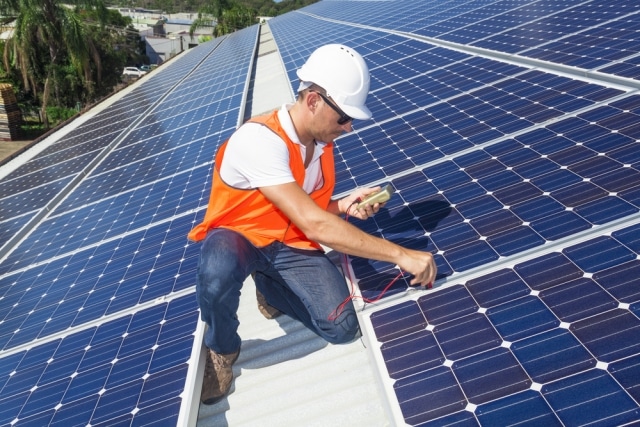The sun could be our biggest single source of energy and prevent 6 bilion tonnes of climate-warming CO2 pollution by 2050, according to two new reports.
Issued by the International Energy Agency, the two “Technology Roadmap” reports conclude that solar photovoltaic (PV) systems could supply 16% of the world’s electricity needs and concentrating solar power (CSP) plants could provide another 11% by the mid-point of the 21st century.
Underscoring these findings, IEA Executive Director Maria van der Hoeven says, “The rapid cost decrease of photovoltaic modules and systems in the last few years has opened new perspectives for using solar energy as a major source of electricity in the coming years and decades.”
To get there, however, the reports warn that “clear, credible and consistent signals from policy makers” must be provided in order to inspire confidence in investors, as both PV and solar thermal electricity technologies like CSP require big up-front capital expenditures.
“Lowering the cost of capital is thus of primary importance for achieving the vision in these roadmaps,” Van der Hoeven adds.
Indeed, just a few days before these reports were issued by the IEA, BrightSource Energy and Abengoa Solar withdrew the application for their Palen solar project, a 500-Megawatt CSP plant outside of Indio, CA. The companies cited the fact that the project was unlikely to be completed by the end of 2016 and thus would not qualify for the solar investment tax credit.
Created in 2006 and extended to December 31, 2016 by the Emergency Economic Stabilization Act of 2008, the solar investment tax credit allows qualifying solar projects to claim tax credits for 30 percent of eligible costs of construction.
The withdrawal of the application for the Palen solar project is all the more surprising because California regulators reversed a previous decision to reject the application just two weeks ago, after BrightSource and Abengoa emphasized the fact that the project would be able to incorporate thermal energy storage, a crucial component to ensuring consistent supply of solar energy from intermittent sunshine.
It should be noted that environmentalists and Native American groups applauded the demise of the Palen solar project, as they claimed—and California regulators agreed—that it would have had significant environmental and cultural impacts.
Still, the fact that BrightSource and Abengoa ultimately decided to kill the project due to uncertainty around the future of the solar tax credit shows that there is a significant need for the US Congress to take action in order to ensure continued development of solar energy.
But according to greentechmedia, the solar industry is engaged in a “full-court press” to get the solar tax credit extended, and have so far not gained much traction with Congress:
The fervent hope among those in the solar industry is that Congress will extend the expiration date for the subsidy in recognition that the industry needs more time to gain a foothold as interest in clean energy gradually increases and costs stabilize. So far, however, the solar industry seems to be facing an uphill struggle, as there appears to be no clear consensus among legislators that the expiration date should be extended.
According to the Solar Energies Industry Association, the solar investment tax credit “has helped annual solar installation grow by over 1,600 percent since the ITC was implemented in 2006 — a compound annual growth rate of 76 percent.”
The IEA says that there were 137 GW of solar capacity installed worldwide at the end of 2013, and that as much as 100 MW of additional capacity were being added every day. Whether or not that pace will continue, let alone ramp up, without action by the US Congress, remains to be seen.
Image Credit: Young technician checking solar panels on factory roof by zstock / Shutterstock.com
Subscribe to our newsletter
Stay up to date with DeSmog news and alerts






